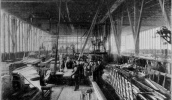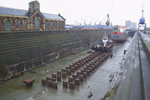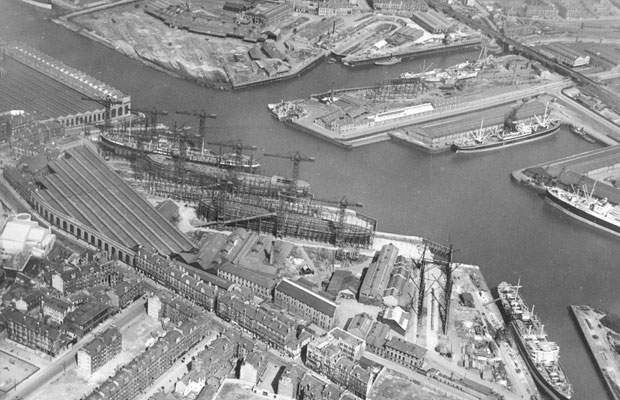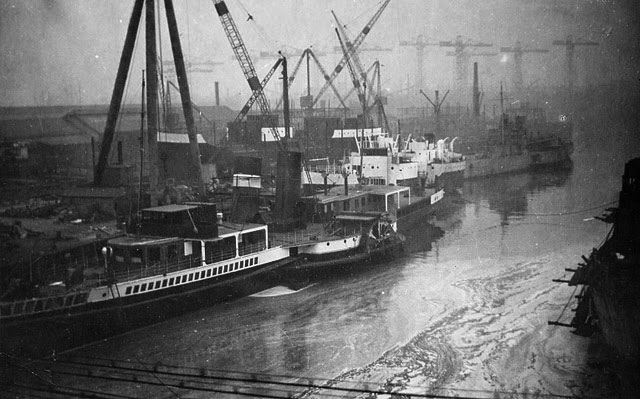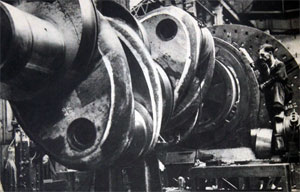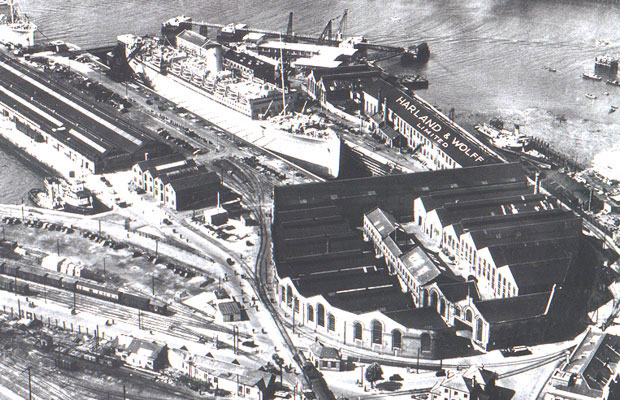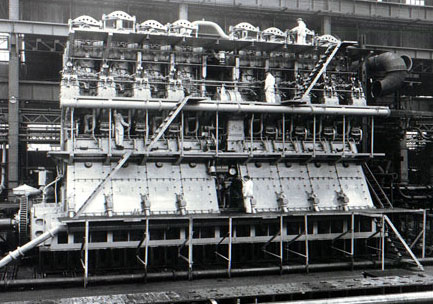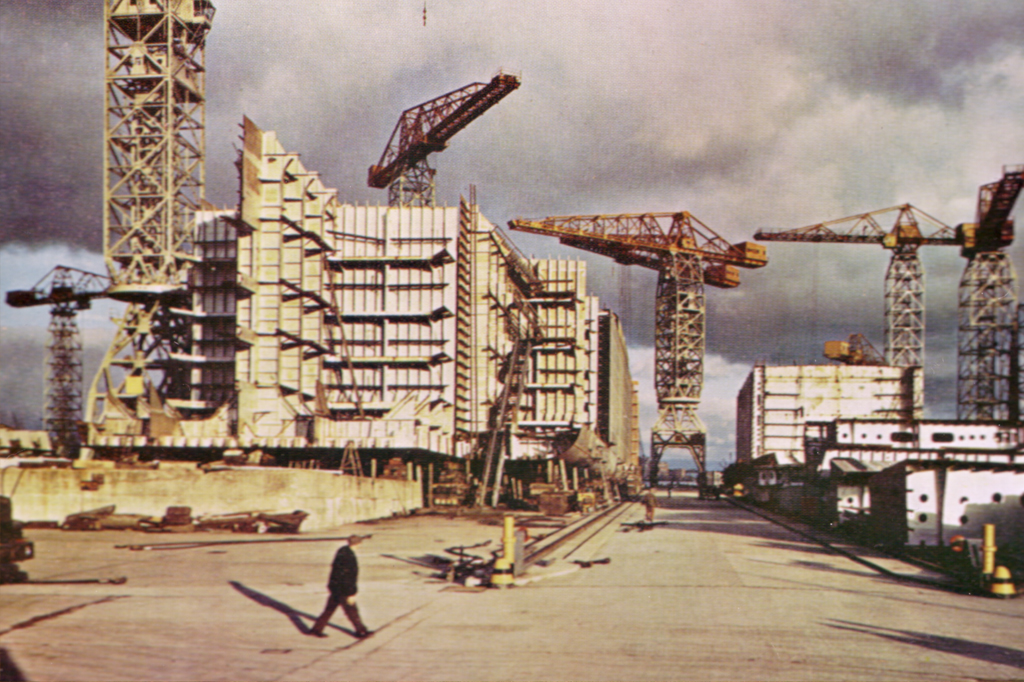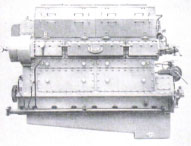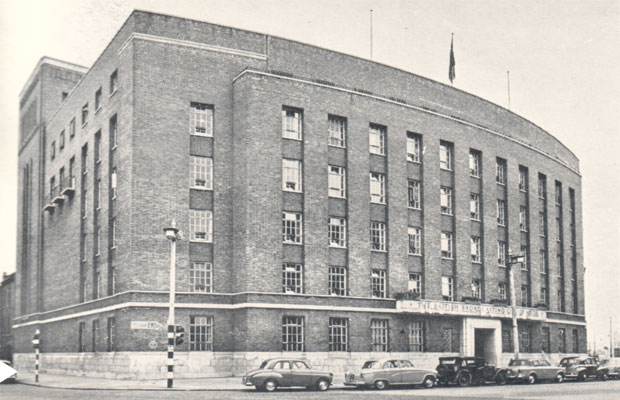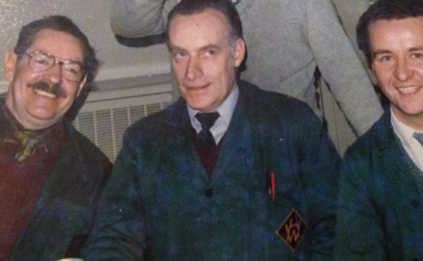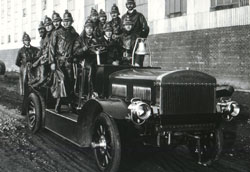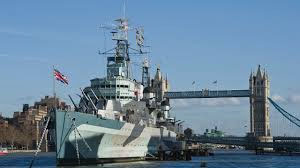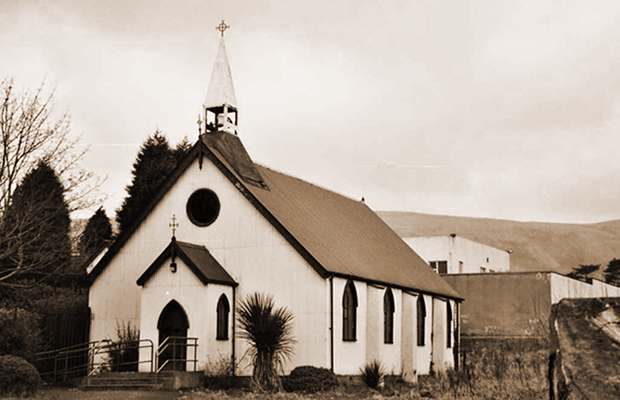Assembly-line production of aircraft in Ulster commenced in 1917, when the company were awarded a series of contracts for a combined total of 1,000 aircraft for the Royal Flying Corps and Royal Naval Air service. In response, during the period 1917-20, the company produced at least 600 aeroplanes, mostly the Airco DH.6 and Avro 504 types plus a comparatively small number of Handley-Page V1500 bombers.
To facilitate the test-flying of the V1500s, an airfield was constructed at Aldergrove. Whereas Harland and Wolff stopped building aircraft in 1920, the experience gained was a factor which led to the creation of Short & Harland in 1936, the result of an amalgamation between the world’s oldest aircraft manufacturers Short Brothers (Rochester & Bedford) Ltd and Harland & Wolff.
In 1947, following a decision by Short Brothers to cease their design and manufacturing work in England, Short & Harland took over the company which then became Short Brothers & Harland Ltd, then Short Brothers Ltd and then Short Brothers plc until taken over by Bombardier Inc in 1989.
Production line construction of the Avro 504
The Airco DH.6 was a British military trainer biplane used by the Royal Flying Corps during the First World War. Known by various nicknames, including the "Skyhook", the trainer became a widely used light civil aircraft in the postwar era.
Harland and Wolff serial range - C5451 to C5750
Handley-Page V1500
Owing to pressure of work at Handley Page's Cricklewood factory, and to ensure security, the first prototype Handley-Page V1500 was constructed by Harland and Wolff at Belfast, being assembled at Cricklewood and first flying on 22 May 1918.
General characteristics
Crew: Eight or nine
Length: 64 ft 0 in (19.51 m)
Wingspan: 126 ft 0 in (38.41 m)
Height: 23 ft 0 in (7.01 m)
Wing area: 2,800 ft² (260 m²)
Empty weight: 17,600 lb (8,000 kg)
Max. takeoff weight: 30,000 lb (14,000kg)
Maximum speed: 99 mph (159 km/h) at sea level
Range: 1,300 mi (2,090 km)
Endurance: 17 hours

|
|
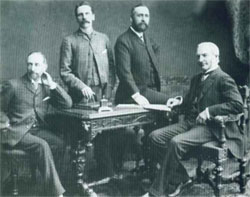 The PartnersHarland, Wolff, Pirrie and Wilson
The PartnersHarland, Wolff, Pirrie and Wilson
 The HatsChairmen, MD's, CEO's
The HatsChairmen, MD's, CEO's
 Sir Frederick RebbeckChairman 1930-41 1944-62
Sir Frederick RebbeckChairman 1930-41 1944-62
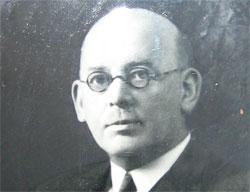 Sir Charles PalmourChairman 1941-1944
Sir Charles PalmourChairman 1941-1944
 John S BallieChairman 1962-1965
John S BallieChairman 1962-1965
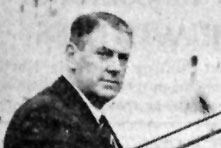 Dr Dennis RebbeckChairman 1965-1966
Dr Dennis RebbeckChairman 1965-1966
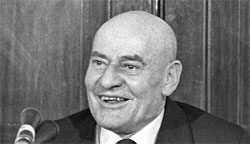 Sir John MallabarChairman 1966-1970
Sir John MallabarChairman 1966-1970
 Joe R EdwardsChairman 1970
Joe R EdwardsChairman 1970
 Alan WattActing Chairman 1970-1971
Alan WattActing Chairman 1970-1971
 Lord RochdaleChairman 1971- 1975
Lord RochdaleChairman 1971- 1975
 Sir Brian MortonChairman 1975-1980
Sir Brian MortonChairman 1975-1980
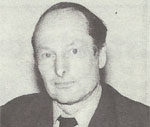 Victor Alexander CookeChairman 1980-1981)
Victor Alexander CookeChairman 1980-1981)
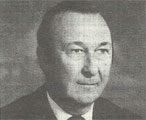 Vivian WadsworthChairman 1981-1982
Vivian WadsworthChairman 1981-1982
 Sir John ParkerChairman 1982-1992
Sir John ParkerChairman 1982-1992
 Islandmen(and Women)
Islandmen(and Women)
 Save our ShipyardSupport and solidarity
Save our ShipyardSupport and solidarity
 The War MemorialsWe Will Remember Them
The War MemorialsWe Will Remember Them
 The Bible Class
The Bible Class
 Nicknames
Nicknames
 The Yarns(and Tall Tales)
The Yarns(and Tall Tales)
 The Shipyard IndentureJW Mullholland
The Shipyard IndentureJW Mullholland

